Chad Paris - Ventilation Diversification: More Than Hot Air - PODCAST TRANSCRIPT
April 22, 2025 at 2:00 p.m.Editor's note: The following is the transcript of a live interview with Chad Paris of Attic Breeze. You can read the interview below or listen to the podcast.
Intro: Welcome to Roofing Road Trips, the podcast that takes you on a thrilling journey across the world of roofing. From fascinating interviews with roofing experts to on the road adventures, we'll uncover the stories, innovations and challenges that shape the rooftops over our heads. So fasten your seat belts and join us as we embark on this exciting roofing road trip.
Karen Edwards: Hello, everyone and welcome to another episode of Roofing Road Trips from RoofersCoffeeShop. My name is Karen Edwards, and today's episode is going to be talking all about attic ventilation options and why it matters and how it makes a difference to diversify your offerings for your customers.
And I am welcoming Chad Paris from Attic Breeze. Chad, welcome.
Chad Paris: Thank you. Thank you for having me, Karen. Excited to be here. Appreciate the warm introductory.
Karen Edwards: Yeah. So for those who don't know, just introduce yourself. Tell us a little bit about your background, maybe and what you do there at Attic Breeze.
Chad Paris: Absolutely. So again, my name is Chad Paris and I am the Senior Vice President of Sales and Marketing with Attic Breeze. And I have been in the roofing industry for 15 years, from the distribution side, all the way over to the manufacturing side.
And I love the roofing industry. It's a true passion. I've had this conversation with a couple of distributors this week. It's just good people. It's really good people. And so I find myself ... I tried to get out for a little while, but it sucked me right back in. And I love the industry. I think it's an amazing industry, a lot of hardworking people and so being a part of that is like a nice knit family and I enjoy being a part of that.
Karen Edwards: Yeah, yeah. Very well said. And I have seen so many people that do try to leave, but you can't ever leave.
Chad Paris: Oh, once you're in, you're in. You're not getting out, that's for sure.
Karen Edwards: Yeah. So tell me real quickly. I mean, the name Attic Breeze is perfect, because it really is descriptive of what your products do. So just talk a little bit about the company itself and how you help contractors with the ventilation in the homes.
Chad Paris: Yeah, this is really a very good story about Attic Breeze and how it got started and it really correlates a lot with what our roofers do. We're a entrepreneur. The creator of Attic Breeze was a gentleman by the name of Travis Hipp who lived in Gatesville, Texas and an engineer by trade. And he was actually building a house and he was obviously a hot day in Texas. We all know. We live in Texas, we know it's very hot.
And he's like, "I got to do something to get that air out. The passive vent's just not working. I got to get something moving there."
And he actually created the first ever generation of the Attic Breeze in his garage, believe it or not. Again, engineered by trade. He knew what he wanted to do. He's putting parts and pieces, and I think the thing was so big, his wife's like, "There's no way you're putting that on my house."
And so he's like, "Well, I don't know if I could test it to work." So he had a piece of rental property and he put it on there and he went in the attic and it was a hot day, 115 day degree day we get in Texas. And within in the attic, it's probably another 160 in there, because it's obviously going to be hotter in there. And he put it on and he tried it and about an hour later he came back and it was about 110 degrees. He's like, "Okay, I have something."
So he literally started building them in his garage to the point where it kind of grew out into the driveway, so to speak. And HOA was like, "Okay, you got to do something."
Karen Edwards: Right.
Chad Paris: So he started selling them one off just by people in the neighborhood, and it developed into what's known today as Attic Breeze.
So it's truly an entrepreneur company, which is really cool. Formed in 2006 and has been really working on the cutting edge of trying to understand what roofers need and how to put it in and also the ventilation part that a lot of homeowners don't know and solving that problem with a solar attic vent that we have and very proud to have. And it's a great product.
Karen Edwards: And it's come a long way since that first demo.
Chad Paris: Yes.
Karen Edwards: Because now it's pretty.
Chad Paris: It is. That big, it was kind of big and probably didn't have a lot of color to it, but the concept was created or birthed there. And once that happened, I think he saw a bigger picture.
Again, I think it's very, very comparable to some of our roofing contractors that start a company and grow it into something that's magnificent. And I think that's the cool thing about it is when people buy from is they're buying from somebody who's just like themselves, who's built it and makes something that can work.
Karen Edwards: Yeah, yeah. So let's talk a little bit about ... We have had conversations many times about the importance of ventilation. We know if your attic's not properly ventilated, all kinds of bad things can happen and we want to avoid that.
But the industry itself is slow to change. And we just chatted briefly before we started this podcast and I thought you had some really good thoughts on, well, this is how we always do it. But why should contractors consider adding something new or different like an Attic Breeze solution?
Chad Paris: Yeah, Karen, it's a fantastic question and I often get asked that question a lot. Passive ventilation has been around forever. I mean, it's something that's been done on roofs and people have been doing it. And really, honestly, majority of, I would say, across the United States, that's what's used most common.
And I think what we're seeing is that while it's a great product, it's not moving enough air and getting it out of that attic. Or even in the colder climates where you get a lot of moisture, it's not getting that air turning over. There's not enough air changes in an hour is what we really talk about that's actually making a difference.
And as we know that a lot of homeowners have their air return unit is sitting in the attic. Believe it or not, there's a lot of people who put a lot of their memorabilia and their things in the attic. And then they go back and it's either corroded or they've had some moisture problems or whatever that may be that happens. Sometimes it's too late, because not everybody goes to the attic every day.
Karen Edwards: No.
Chad Paris: But the more air changes you can get in that space, the cooler that space is going to be and it's going to help the life of the shingles, it's going to help whatever's in that attic, as well as being that air handler. And honestly, just the heat that's coming down in a really hot day or cold day that comes through that insulation into the house, we want to get that air out of there so that space is cooler and it's not affecting the inside of the house. So you hear your air conditioning running nonstop in the heat of the day.
Karen Edwards: Right.
Chad Paris: And that's the purpose. That's really the importance of getting something up there that can really a little more power, that doesn't wait on the wind to blow, but more of actively moving air.
Karen Edwards: So tell me, I'm curious, because passive ventilation, my house has a ridge vent, right?
Chad Paris: Yeah.
Karen Edwards: I've got soffit for intake. So does the Attic Breeze solution complement that existing passive or can it just be an entirely new solution?
Chad Paris: Yeah. So really and truly, it's a new solution. So think about when you have a ridge vent on your house, and again, it's a great product. It's been around a long time. You're cutting that ridge vent at the top of the ridge of the house.
And I always say this, being in the roofing industry, the more penetrations or the more openings that you have on a roof, the more chances that you're going to get some type of leak or some type of something coming into that space. And with the soffits on the side of the house, which all homes have a soffit, putting that solar attic vent, that Attic Breeze, a product on that roof, you've got one penetration, you've got the power of that fan that's pulling, that's actually circling and pulling that air, so you don't need that ridge vent or the multiple openings.
And so you're limiting the openings on the roof and you're getting more air turning than you would be with a lot of the passive vent that's got multiple openings throughout the roof.
Karen Edwards: Okay. So good to know. Thank you for that. It was a great explanation.
Chad Paris: Yeah.
Karen Edwards: I want to talk from a contractor's perspective. How does it help them maybe differentiate themselves or stand out by bringing the latest technology to a customer? I would think that gives them a competitive edge.
Chad Paris: Absolutely. And that's what we really focus on, helping our contractors. We're very contractor-centric and going out and training the contractors. We want them to be able to obviously be knowledgeable, but we want them to be able to have that communication with a homeowner.
Because most homeowners, when they drive up to the house, they look and they see they, "Oh, I have a roof." That's what they look at. They know that.
Karen Edwards: Yeah.
Chad Paris: And you say, "Well, what color is it?" "Well, I don't know. Let me go back outside." They really don't know anything above the roof, like the roof line of the inside of the house, the ceiling. What's above that? They don't go up there every day. It's not in their face. They're not really looking at that.
So if a contractor is speaking with a homeowner and they can really educate the importance of why attic ventilation is so important in their home, not necessarily for just the roof, but the heating and energy efficiency of the house, the moisture inside that house in the cooler time of the year and what it's actually longevity of helping those shingles last longer, then they're giving that homeowner an understanding of the importance of it.
And I've already said most 80% of the roofing that's done today is done with a passive vent. So as a contractor, if I can go in, I can sell a passive vent that doesn't have to have power, it's run off solar. An active vent. Then I'm already giving the homeowner something that obviously going is to be cheaper for them, on the energy efficient, they're going to get more air out of there, which is going to help them with the mildew and the mold or anything like that can happen up there.
So as a roofer, you're actually giving them a, "Here is a possible problem and now here's a solution that can fix that." And it is, it's an advantage for those roofers that sell on that.
Karen Edwards: So not every house is the same, right?
Chad Paris: Correct.
Karen Edwards: Not every roofing material is the same. So we're not talking about one size fits all here. You've got to have different styles, types and options.
And how do you help the contractor, first of all, maybe talk about those different styles and options and then maybe how you help the contractor know what is the right one for that home?
Chad Paris: Yeah, so Attic Breeze, we have two main product lines, but within those product lines, we have different variations of wattages. And basically when I say wattages, it means power. It means the power of the fan and what it's doing.
So we have a cardinal line, which is, I would say, our normal fan, just like what everybody else has. Pretty common. We have it in a 20-watt and a 30-watt. All solar, so it's ran off of solar. It has no power hooking up to that. But with those two products, you've got a little bit of a lower profile and what you're getting out of that is you're getting a product that is going to move the air out of there. And so it's really determined on the square footage of the house and what you're trying to do. So certain levels of, we call it CFM and being able to know that that air moving and that air pull is tailored to the square footage of the house.
So we help them understand, "Okay, you've got this size house, you need one of these or you need two of these or three of these," and where to place those to get maximum productivity out of that fan.
The other line that we have is called our Attic Breeze, which is the main brand. We call it the Cadillac of the industry. No one on the industry has as big of a fan that we have. The power that this fan has, it is the top of the line in attic ventilation. And then with that as well, we have it in a 25-watt, a 35-watt, a 45-watt and a 65-watt. All different powers and CFMs for that that can go for any type of application.
Within that, we have different mounting opportunities. So if you were doing a shingle roof, you would put a self-flashing. If you had a metal roof or a nice barrel tile like a [inaudible 00:13:31]. In some of the coastal areas, you have the curb mounted. So you've got some variations of way that it can be mounted to the roof.
All of our products are hurricane tested, high velocity tested. They have all the codes and approvals for that, because we want to make a great product, but we want it to stand the test of time in a storm.
But that's how we help the roofers understand, okay, what's the size we have of the house? A lot of times people think, "Okay, well I have a 2,200 square foot house," but maybe they have a five on 12 or six on 12. The pitch of the roof is really, really short. Well, the square footage inside the attic may not be as much as if it was like a 10 on 12 where you had a bigger open space. You've been in some attics where you have to crawl around in. You have some that you could play football in, right?
Karen Edwards: Yeah.
Chad Paris: And so you got to take that into variations and understand what you're trying to move in order to do that. We have some helpful resources on our website that you can go to that will actually calculate for you and tell you what kind of wattage and how many you would need.
Karen Edwards: So help me understand how .. I mean, this is kind of self-contained, right? It's got solar panels that are turning the fan on.
Chad Paris: Correct.
Karen Edwards: So no electrician required?
Chad Paris: No electrician required. Our fans have a ... There's a thermostat in it basically that will, at 75 degrees, it starts working. And that's where we feel like that's the best time for it to start moving the air in there as the day's heating up. You always want a solar panel to be in the south-facing sun. That's where you're going to get the most sun of the day. And then that fan's working once it ... If I pulled one out of the box right now and the sun outside, it would automatically start working.
A couple of features that we have in ours that are a little bit kind of neat is we do have a mechanism inside. If the house was to happen to catch on fire, the worst thing you want to do is and this happens a lot with if you've got a passive vent, there's air going, so you're feeding the fire. With this fan, if it senses there's heat and fire in the house, it cuts off. It shuts down so that it stifles that air, because we don't want it keep fueling the fire.
So yeah, I mean, it's a well-thought-out. And when I say that's our mentality of what are we trying to do here and what are we trying to [inaudible 00:15:55] A, the homeowner, but B, also the roofing contractor to stand behind and say, "Hey, we sell this."
Two things with our product I'll just add that we love to do, and I think it's important, is on our Attic Breeze, we have a Lifetime Parts Limited Warranty.
Karen Edwards: I was just going to ask that question about the warranty, yeah.
Chad Paris: Yeah.
Karen Edwards: So whose lifetime? The lifetime of the roof, of the owner?
Chad Paris: So it's when they sell it to a homeowner, they actually have a form they fill out and that's a lifetime of the homeowner that lives there. The lifetime of warranty. Meaning that if let's say year five, the solar panel for some reason went out, they would send it back into us. We would send them a new solar panel, and they would put the new solar panel on. If you have a natural disaster where a tree falls on it or something like that, well, that's not under warranty. That's the natural causes.
Karen Edwards: Right.
Chad Paris: But we make it, we want it to last the life of that homeowner that's there. And then our cardinal has the Cardinal Ventilation by Attic Breeze: 25-Year Parts Limited Warranty, which is one of the top in the industry as well. We believe in making a really good product and lasting versus wanting to replace it all the time.
Karen Edwards: Right. Because, yeah, especially in the case of tile or metal or the roofs that really have that longer lifespan, you don't want to have to be taking vent out and putting a new one in in 10 years.
Chad Paris: Yeah. And as things have changed in the roofing industry, I think the products today, the evolution of products has come so far. And I think that as we look at where we started years ago with shingles, even though we did the 03 tab even before that, but we've come a long way in the roofing industry.
And so you're seeing more and more, I think, roofing contractors are selling really long warranties to homeowners. If you live in Texas, like I do, you get a lot of hail. So there's a lot of changeover in roofs. But some of these areas where people want to get 10, 15, 20 years out of the roof, they don't want to have to replace it every five or six years. So product has come a long way and better quality, I would say, overall, in all the industry.
Karen Edwards: It has, especially with the weather. The severe weather seems to just be more and more. And I think we're seeing manufacturers really double down on the performance of their roofing materials, because you just don't know what's going to come through. And places that never used to get hail are getting hail now.
Chad Paris: Yeah.
Karen Edwards: So we're seeing that.
Chad Paris: I think you're absolutely correct. I think we're looking at now where you're right, I mean, there's high winds that pop up, tornadoes, hail, all over the place, not just in the normal areas that has always gotten that. And I do, I think the products today are made so much better than they were made 10 years ago, five years ago. And I think that's going to continue a trend that it's just sourcing the good material and really making a high-end product that lasts.
Karen Edwards: Yeah. Okay. So last question. If a contractor is like, "Wow, I'm listening to this. This sounds like an amazing solution, I want to offer this to my customers." How do they get started?
Chad Paris: Great question. Yeah. So our website is www.atticbreeze.com. Will take them to our website. There's a place to fill out if they want to be inquisitive about the product or what's next steps or tell me a little bit more about that.
We also on social media, Instagram, Facebook, RoofersCoffeeShop. We've got a partnership with you guys. But they also, distributors. There's the SRSs, the ABCs, the Beacons, the SPECs, the Gulfeagle, the Cameron Ashleys, all those out there have access to our product and we have sales reps on the ground as well that we can get coordinated with them and have an opportunity to do a breeze session, tell them about the product, get more in-depth than we've gone here about it and really educate them.
And I think the biggest thing for us is we don't want to just sell a product and they go, "Okay, we got it. We'll put it on." We want to walk alongside them and help them understand how to sell it and really close that gap and how to make obviously more profit for them, but also offering the solutions of a better products for their homeowners and really understanding, "Oh, man, adding ventilation is an important conversation I need to be having." And we help them how to do that.
Karen Edwards: Yeah, yeah, because really it's on the contractor to educate that homeowner about why it makes sense to upgrade their ventilation and the benefits that are going to go along with that. And having Attic Breeze as a partner to guide them and teach them how to do that, I think that's really powerful.
Chad Paris: Yeah, I mean, again, I started off the whole conversation telling, we were created just like the roofers that are out there. We were an entrepreneur company and we know what it's like to be all alone-
Karen Edwards: Yeah.
Chad Paris: ... in an industry and not having resources and help. And we want to partner with our contractors and make sure that A, they feel taken care of and B, they have a resource when they don't know the answer and they got a one call to say, "Okay, here's a question. I need to know the answer. How can you help me?" And being able to do that, and I think that's powerful. I know for me, I want to pick the phone up and call somebody and say, "Please tell me how to do this. I've tried this. I can't figure it out. Help me."
Karen Edwards: Right.
Chad Paris: And that's what we want to do. Yeah.
Karen Edwards: Yes. And you're there to answer the phone, because the call is probably going to come in when they're in the middle of an installation, right?
Chad Paris: Yeah. We have a support team that's there when people call. They get a real person. They're not talking to someone overseas. It's someone in Gatesville, Texas. And we want to make sure that we troubleshoot their issues, and oftentimes we have it where that's got to be done and we want to make sure that that gets done.
Karen Edwards: Thank you so much for being here today, Chad and for sharing all this information. I love the story. I love the features, the heat, it's going to turn off, the temperature control. It really, really sounds like an incredible solution that if you're not offering to your homeowners, you need to be. So, Chad, thanks again.
Chad Paris: Karen, thank you for having me. It's been a joy.
Karen Edwards: Yeah. And visit atticbreeze.com or check out their directory on RoofersCoffeeShop.com. Has all their contact information, information about the product lines, everything you need to know.
And thank you, everybody, for tuning in today. We appreciate you being here. Be sure to subscribe and follow us on your favorite podcast platform, because we want to see you on a future episode. We'll see you next time. Bye-bye.
Outro: If you've enjoyed the ride, don't forget to hit that subscribe button and join us on every roofing adventure. Make sure to visit RoofersCoffeeShop.com to learn more. Thanks for tuning in and we'll catch you on the next Roofing Road Trip.

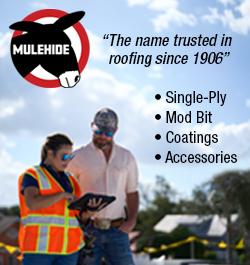






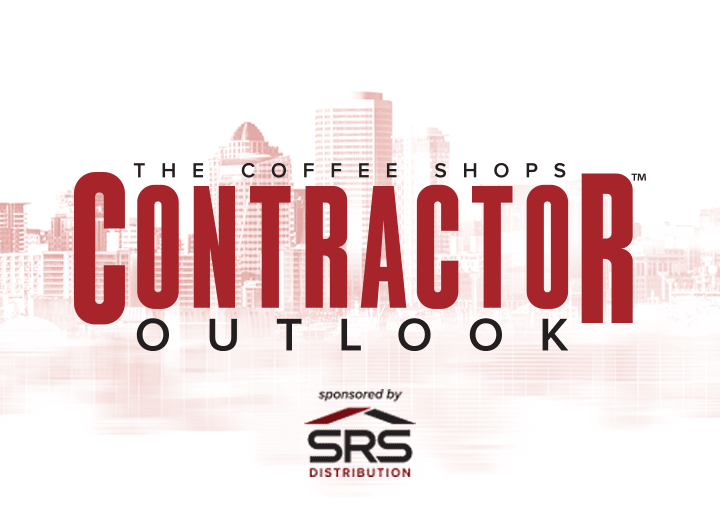


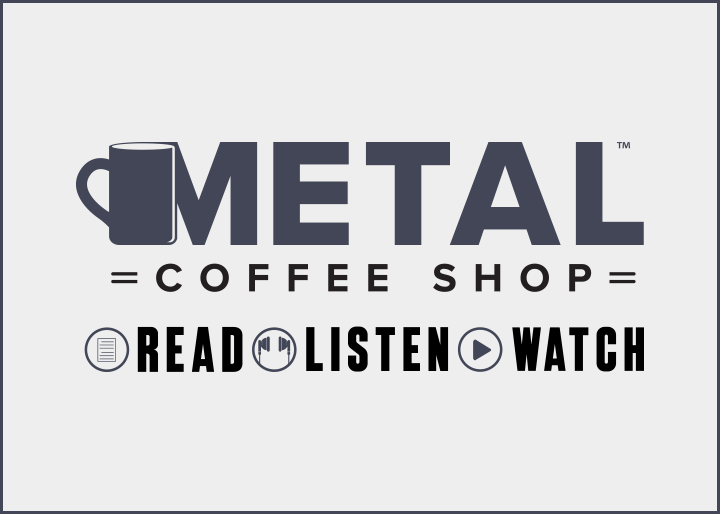

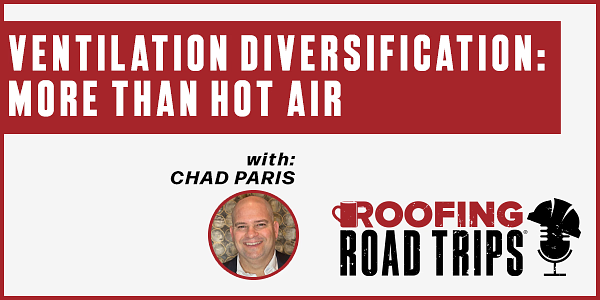
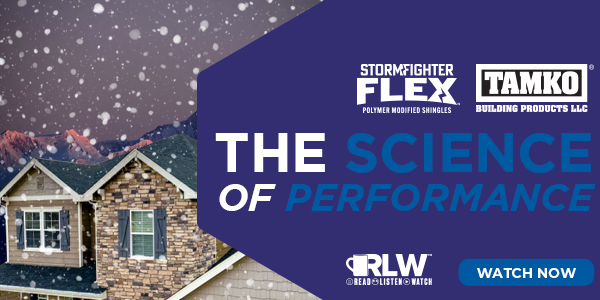
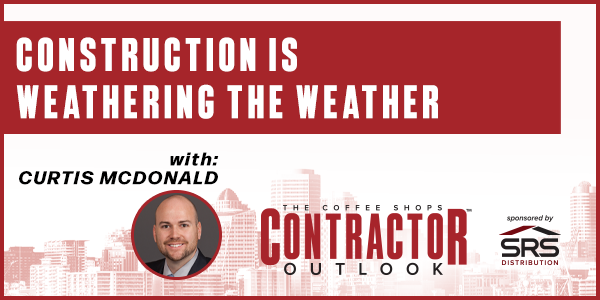
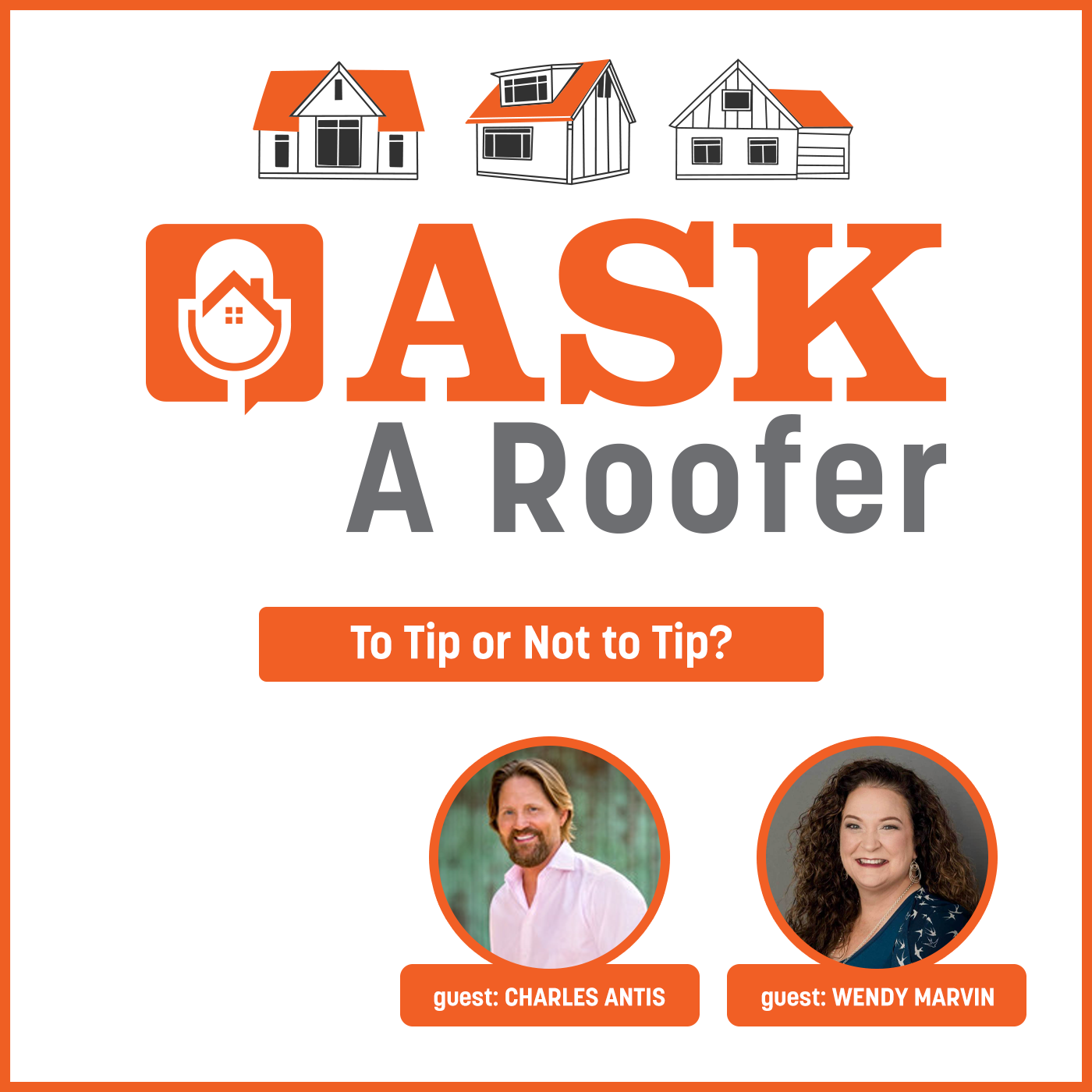





Comments
Leave a Reply
Have an account? Login to leave a comment!
Sign In